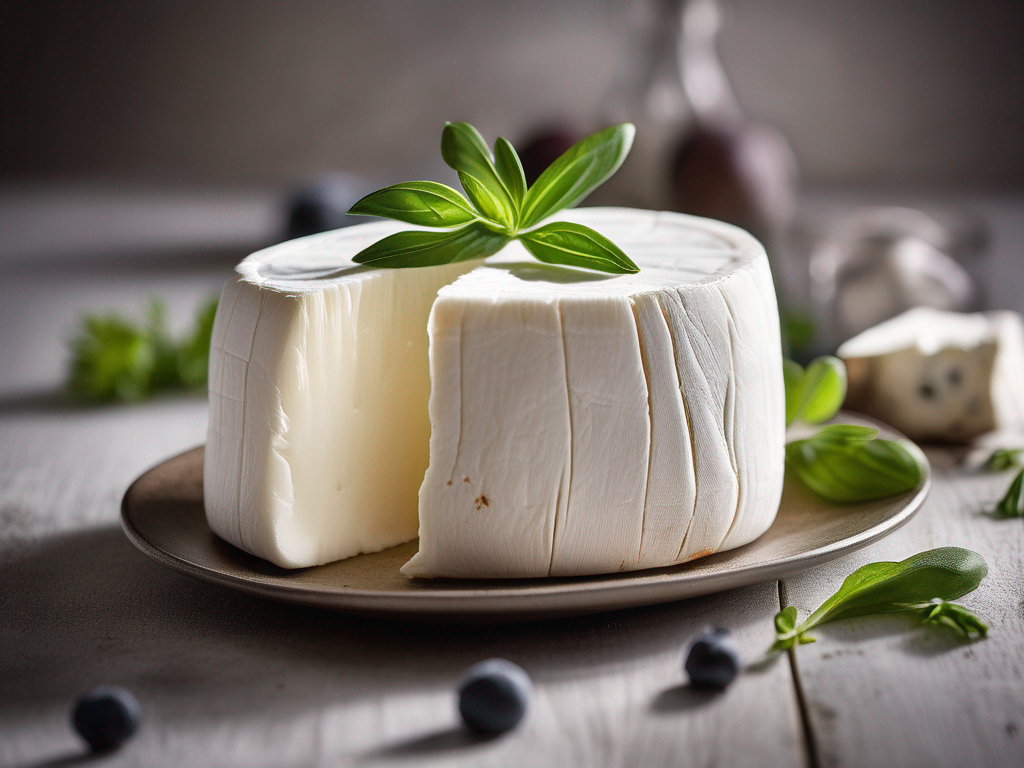
Is My Goat Cheese Chevre Fresh: How to Tell if it has Gone Bad
Get Your Free Food Safety Cheat Sheet
30 most common foods with instant answers. Print it and stick it on your fridge—completely free!
Is My Goat Cheese Chevre Fresh: How to Tell if it has Gone Bad
Goat cheese, also known as chevre, is a popular dairy product loved for its creamy texture and tangy flavor. Whether you enjoy it on a cheese board, in salads, or as a spread on crackers, it's important to know how to determine if your goat cheese is still fresh or if it has gone bad. In this blog post, we will explore the signs of spoilage in both unopened and opened goat cheese, as well as provide practical tips for storage and safety. (Goat cheese)
Unopened Goat Cheese: Signs of Spoilage
When you purchase goat cheese from the store, it typically comes in a sealed package. Here are some signs to look out for to determine if your unopened goat cheese has gone bad:
1. Check the Expiration Date
- Look for the expiration date on the packaging. If the cheese is past its expiration date, it is best to discard it.
2. Inspect the Packaging
- Check the packaging for any signs of damage, such as tears or leaks. If the packaging is compromised, bacteria may have entered the cheese, leading to spoilage.
3. Smell the Cheese
- Give the sealed package a sniff. Fresh goat cheese should have a mild, tangy aroma. If you detect any sour or unpleasant odors, the cheese may have gone bad.
4. Examine the Texture
- Press gently on the package to feel the texture of the cheese inside. Fresh goat cheese should feel firm but slightly soft to the touch. If the cheese feels overly mushy or crumbly, it may be spoiled.
Opened Goat Cheese: Signs of Spoilage
Once you have opened your goat cheese, it is important to keep an eye out for signs of spoilage. Here are some indicators that your opened goat cheese may have gone bad:
1. Mold Growth
- If you notice any mold on the surface of the cheese, it is a clear sign that it has spoiled. Mold can be green, blue, or white in color and should not be consumed.
2. Unpleasant Odor
- Take a whiff of the cheese. If it emits a strong, sour, or ammonia-like smell, it is likely no longer safe to eat.
3. Changes in Color
- Fresh goat cheese is typically white or off-white in color. If you observe any unusual discoloration, such as yellow or pink spots, it may indicate spoilage.
4. Slimy Texture
- A slippery or slimy texture on the surface of the cheese is a sign of bacterial growth and spoilage. Discard the cheese if you notice this texture.
Proper Storage Tips for Goat Cheese
To ensure the longevity of your goat cheese and prevent spoilage, follow these storage tips:
-
Refrigerate Properly: Store goat cheese in the refrigerator at a temperature between 35-40°F (1-4°C) in its original packaging or an airtight container.
-
Use Fresh Wrapping: If the original packaging is damaged, rewrap the cheese in wax paper or parchment paper to maintain its freshness.
-
Avoid Moisture: Keep the cheese away from moisture and humidity, as excess moisture can promote mold growth.
-
Use Odor-Proof Containers: Store goat cheese away from strong-smelling foods in odor-proof containers to prevent flavor transfer.
Conclusion
In conclusion, it is essential to pay attention to the signs of spoilage in both unopened and opened goat cheese to ensure food safety. By following the guidelines outlined in this blog post and practicing proper storage techniques, you can enjoy fresh and delicious goat cheese without the risk of consuming spoiled dairy. Remember to trust your senses and when in doubt, it's best to err on the side of caution and discard any goat cheese that shows signs of spoilage.
Next time you indulge in some goat cheese, remember to [check out our goat cheese recipes](/food/goat cheese) for some culinary inspiration! (Goat cheese)
Authoritative Food Safety References
These agencies and university labs inform every tip and health precaution we publish.
USDA FoodKeeper – Cold Storage Guidelines
Official refrigerator, freezer, and pantry timelines maintained by the U.S. Department of Agriculture.
Visit USDA FoodKeeperFDA Produce Safety Rule & Grower Guidance
Field-to-fridge handling practices that prevent contamination of fruits, vegetables, and leafy greens.
Visit FDA Produce SafetyCDC Foodborne Illness Prevention Hub
Surveillance-backed guidance on pathogens, symptoms, and steps to reduce foodborne illness risk.
Visit CDC Food SafetyUC Davis Postharvest Technology Center
University research detailing optimal storage atmospheres for produce after harvest.
Visit UC Davis PostharvestPenn State Extension – Home Food Preservation & Safety
Peer-reviewed extension bulletins on safe canning, chilling, and reheating practices.
Visit Penn State ExtensionGet Your Free Food Safety Cheat Sheet
30 most common foods with instant answers. Print it and stick it on your fridge—completely free! Want more? Upgrade to the complete guide with 70+ foods.
Scan your food directly and get instant safety info using our AI-powered camera feature.